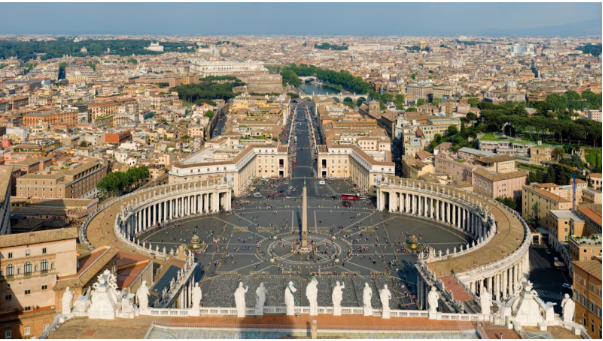Until the Chimney Smokes White- The 2025 Papal Conclave Begins
By Margaux Baudry, read 3 min
On May 7th, 2025, the thick wooden doors of the Sistine Chapel will once again close behind 133 Catholic cardinals- the electors tasked with choosing the next Pope. But this time, the air is less incense and more tense. Following the death of Pope Francis at the age of 88 on April 21st, the Church faces one of its most unpredictable and fractured conclaves in modern history. With more electors, deeper ideological divisions, and an increasingly globalized Church, this isn’t just about white smoke- it’s about what kind of Church emerges from the ashes.
The Process
Behind the velvet drapes of Vatican ritual lies a power struggle as political as any general election. Two ballots per day (except one on the first day) will be cast until a candidate gathers a two-thirds majority. Ballots are burned after each vote, their smoke signaling the results to the world. Black smoke? Back to deadlock. White? Habemus Papam. But don't be fooled by the symbolism - this is not an all-democratic process: women are not allowed to vote and the faithful can only wait, pray, and speculate.
This year’s conclave gathers 133 voting cardinals (under 80 years old) from nearly 70 nations- a more global body than ever before. But diversity doesn’t mean unity. Over 100 of these electors were appointed by Pope Francis himself, meaning many hardly know one another.
The Italian Cardinal Pietro Parolin is widely seen as a front-runner. Having served as Francis’s Secretary of State, Parolin is the quintessential Vatican diplomat- experienced, reserved, and no stranger to geopolitical chess. He’s a devoted critic of same-sex marriage and unlikely to rock the doctrinal boat.
Enter the emotional and empathetic Luis Antonio Gokim Tagle of the Philippines. A pastor first, diplomat second (if at all). Tagle has long been a voice for social justice, migrant rights, and the marginalized. He opposes abortion and euthanasia but isn’t afraid to point out the Church’s failings, like when he criticized its harsh treatment of gay people and single mothers.
Fridolin Ambongo Besungu of the Democratic Republic of Congo also carries Francis’ legacy. Appointed by the late pontiff, Ambongo is conservative but pragmatic, calling for Christian unity beyond Catholic borders. He has even spoken of the possibility to “work with” Muslims or Protestants. Yet his limited recognition am ong European elites could prove a hindrance.
Then there’s Ghanaian Cardinal Peter Turkson, who breaks the mold in more ways than one. While conservative in doctrine, he’s been outspoken in his opposition to criminalizing homosexuality in Africa. That stance might gain him votes in Europe- but his warnings about the rise of Islam in Europe and his own advanced age (76 years old) could hurt his appeal. Still, he has charisma and a pan-African gravitas that may appeal to those wanting to reflect the Church’s demographic shift southward.
A Church at a Crossroads
What this conclave reveals more than anything is a Church in crisis- or perhaps in evolution. Francis’s reign, often progressive in tone but cautious in doctrine, left behind more questions than answers. Can the Church become more inclusive without abandoning tradition? Should it confront global inequality or preserve its spiritual core? Does its future lie in Rome, or Manila, or Kinshasa?
The 2025 conclave might not answer these questions definitively, but the winner will shape the world’s largest religion- and the lives of 1.4 billion Catholics- for years to come.
Meanwhile, as white smoke eventually rises over St. Peter’s Square, let’s not forget what that smoke hides: no transparency, no lay participation, no women in the room. Just 133 old men, cloistered in silence, shaping the future of a Church torn between its past and its potential.

